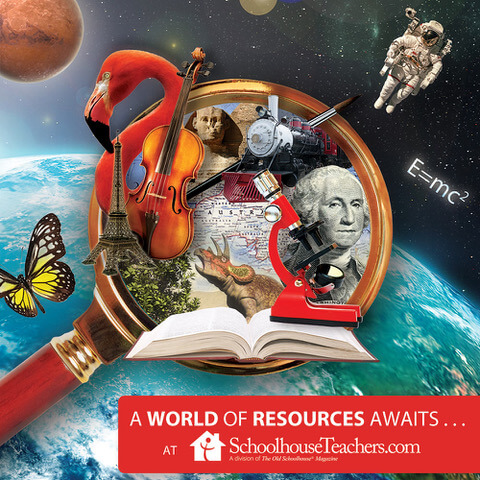Creative Teaching with Drama
You’ve probably already realized that effective teaching requires a certain dramatic element! Even if the drama is merely in your displayed enthusiasm as a means to encourage a student, or if you and your students read textbooks aloud in a full-on theatrical presentation, creative teaching through drama can help students retain information, improve concentration, encourage additional learning, and even improve cooperation and social skills. Check out this Homeschool Living for some great ways to incorporate creative teaching–and learning–into your homeschool!
It may seem easier to incorporate drama in subjects which lend themselves more to a dramatic flair, like language arts and poetry. Acting out scenes from Shakespeare, dramatically reciting poetry, and creating tableaus from key scenes in a book are all great ways to use dramatic elements to engage students. But you can extend those elements into many different subjects. After introducing the concept of fractions, you can have a group of students practice dividing themselves into half, thirds, etc. (an excellent activity for a co-op group). You might borrow dad, younger siblings, and family pets for this exercise, which will certainly add to the dramatic flair!
Role-playing journeys across the country, around the world, and through space offer great opportunities for acting and can include activities like calculating travel times, necessary food and supplies, and more to reinforce mathematical concepts. Check out Drama Resource for some dramatic ways to present topics in art, history, geography, mathematics, science, and more.
Creative Teaching for Creative Minds
This teacher’s creative teaching approach to history lessons through “theatre boxes” makes an excellent lap-book style project that engages students with a variety of dramatic elements. Having the students design, build, script, and perform their own theatre gives them the opportunity to practice research skills, provides hands-on learning, and improves social and speaking skills, all in addition to the historical lesson that is the focal point.
See the boxes in action here. In this example, students are learning about rationing as part of the war effort during World War II. The teacher has assigned each group of students a “secret fact” to learn (“How did people conserve fuel?, How did people conserve energy?” “What did ‘rationing’ look like in a typical family’s home?,” etc.) Another great thing about this activity is that it will work just as well for individual students as for large groups, and can easily be tailored to a wide range of ages.
Science is another topic that offers some creative opportunities to practice teaching with drama. Check out The Science Teacher to learn how to use dramatic elements in science to help model abstract ideas, engage students, and evaluate and understand what the students are thinking. The website offers ideas for using dramatic models, key word charades, mini historical plays, and more.
For more articles on creative teaching, visit our The Virginia Home Educator Magazine (TVHE).









